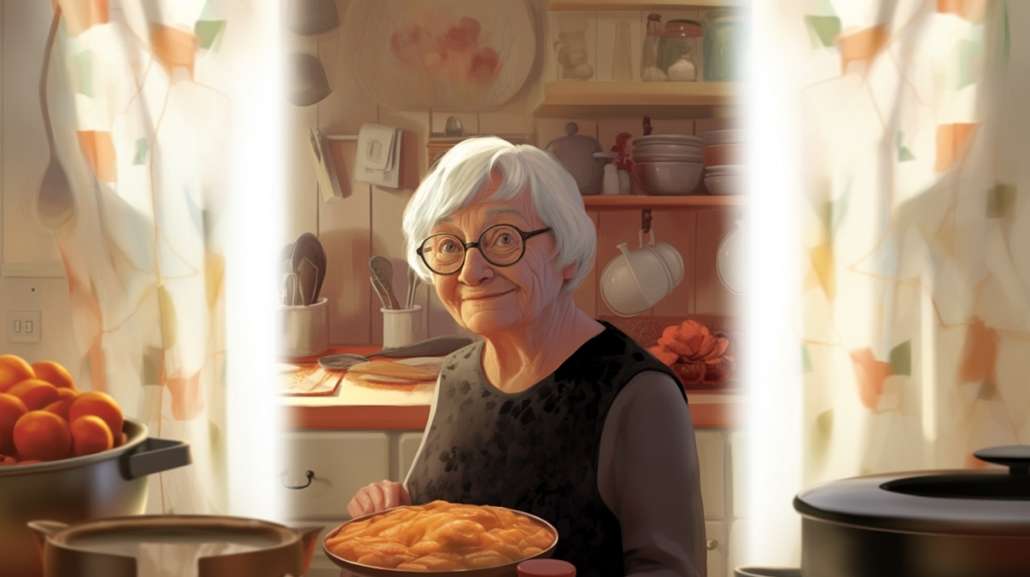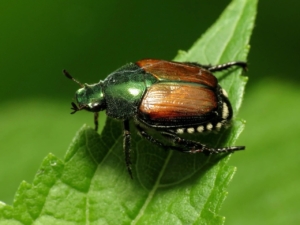“Where is it?” I say to myself, checking out the beef department cooler at the large grocery store.
I’m making spaghetti tonight for supper. I make pretty good spaghetti, but I am sick of making spaghetti and even sicker of eating spaghetti. Just how many times HAVE I made spaghetti in the last 56 years I’ve been married? I don’t want to think about it.
In the early years of my cooking, I had a backyard garden and grew my own vegetables. Spaghetti sauces were absolutely delicious cooked with my own home grown tomatoes. Since then, I have made do with pre-made sauces. For my mediocre spaghetti I have no one else to blame but myself and maybe Chef Boyardee.
I grab a 1.07 pound package of ground chuck, put it into my hand basket, and head towards the check out.
I find an aisle with only one shopper and saunter down.
“Are you having a good day today?” a woman of about age 40 asks me.
Slightly taken aback, I tell her, “I’m having a wonderful day. I only have one item to buy, so I am taking my time.”
“I know what you mean,” she says. “Grocery shopping is the only time I get to go out without my kids, so I am taking my time, too.”
I realize that I must have had a bad expression on my face when I walked by her. She is trying to do a good deed by asking me about my day.
“I am not completely happy, though,” I add, “because I have to make spaghetti tonight for supper. After 56 years I am tired of making spaghetti.”
“I love to cook,’ the woman adds.
I smile at her. I want to say, “Meet me here in 56 years and tell me you feel the same way,” but she is too nice for me to be rude.
She realizes that I really am having a good day, so we say our good byes and a “Have a nice day.”
I used to be a very good cook years ago when I followed recipes and before my cooking show addiction. I even adopted their mantra: “Just add this and that to make your masterpiece. YOU can do it!”
Since adopting this strategy I have had to come up with a new filing system for my recipes. Instead of words like “Chicken Casserole” and “Frittata,” I have subcategories with recipe names like Beef – Make again only if you’re starving, Chicken – What was I thinking? and Healthy – Code word for add more wine.
Something has to change.
When I was a little girl, I used to go to the hairdressers with my mother. She and all of the other ladies dressed to the nines to have their hair done. I asked my mother once why she dressed up so much just to have her hair fixed.
“It’s like this, Norma. I may go into the beautician’s looking ordinary, but when I leave that salon, I feel beautiful. I have to dress the part.”
Although she was always beautiful to me, I have remembered her words.
Armed with my mother’s wisdom, I decide to take a different attitude about shopping. If cooking isn’t inspiring, at least I can make the grocery shopping a more positive experience.
Once a month I travel to another city to shop at a national franchised organic food store. Usually, when I grocery shop, I wear clothes that announce, “This is just another day to complete my weekly boring grocery-buying chores.”
I HAVE noticed, though, during my past trips to that store that the customers are happy and well-dressed. Either they are happy from eating all of that organic food or they consider shopping at this store a very positive experience. The answer is probably both, but I am taking the second reason to heart for my purposes.
Sale day is here. I am prepared to follow my mother’s “positive attitude” and the Food Channel’s “YOU can do it!” advice. I dress in my best pink outfit. I am so pink – top, pants, even shoes – that, as I walk into the store and stride through the floral department, I am one with the flowers.
A non-floral aroma accosts my nostrils. COFFEE! I turn to my left and nonchalantly head towards the free coffee table. I read over the names of the exotic blends: Chocolate Hazelnut, Brazilian, and Deep Roasted House Blend.
I decide that I am going to go full force into this experience. I choose Deep Roasted House Blend and stir in as much sugar as I think will actually dissolve in that very small sample cup. I take two sips of the hot, caffeinated coffee.
“Whoa!” Immediately inspiration hits me. “CHINESE!”
I decide that this must be inspirational because I have never cooked anything Chinese in my life and truly I have hardly ever eaten Chinese food.
I immediately go to the vegetable aisle. Broccoli, carrots and green beans are on sale. Then I buy the pork, the only meat NOT on sale today. One cannot skimp on a masterpiece. I browse attentively through every aisle. Angel Hair, the only pasta I do not have in my pantry, will be my noodles, and where is that secret ingredient? There it is – Teriyaki.
There is only one more experience left to enjoy – Wine tasting.
I get in line with the other retirees, who like me are on medication that doesn’t allow the consumption of alcohol. We are all of the same mind, though—surely a couple of sips of wine will not kill us. I copy the others. I sniff the sweet wine sample, swirl it gently in the tiny paper cup, drink and say, “Ahhh…”
We do the same with the sample of dry wine. Our palates sated, we thank the sales lady and leave en masse without purchasing.
At home I don an apron to protect my pink ensemble and cook madly before the “success” mood wanes.
Never one to limit my creativity, I use a different pan for everything: sauté pork in a frying pan, roast broccoli and carrots on an oven sheet pan, steam the remaining green beans in a steamer pan, and add angel hair noodles to the last pan.
Then I put everything together in the frying pan and add Teriyaki. “Voila” – my masterpiece.”
Our condo has a living room/ kitchen open floor plan, so while watching television, my husband can also see me cooking. Since he can’t cook, he eats whatever I make with no complaints. We usually both agree when one of my creations should not be repeated.
“What’s for supper?” he asks from his comfortable recliner in the adjoining room.
I look down at my latest foodie concoction. Not Chinese, definitely NOT Chinese. It’s…I don’t know…American. That’s what it is, but American what? I ask myself.
“What’s for supper?” my husband asks again thinking that I didn’t hear him the first time.
Well,” I answer. “There’s pork.”
“Okay.” He sounds interested.
“There are your favorite vegetables.” I add.
“Good,” he says seemingly encouraged.
“There’s angel hair pasta,” I am quick to add.
“That all sounds good, but what is it?” he asks with a little wonder.
“I don’t know,” I answer.
“You have spent the last hour in the kitchen chopping, cooking, mixing everything together, and now actually tasting,” he points out. With heightened curiosity he asks, “What do you mean you don’t know what’s for supper?”
Looking down one more time at my latest “This and That” creation, I try to summon up some explanation for my stupor.
“I just don’t know,” I finally answer—”I haven’t named it yet.”
 by Rix Quinn
by Rix Quinn











 A Step Forward for Fairness and Growth in China
A Step Forward for Fairness and Growth in China